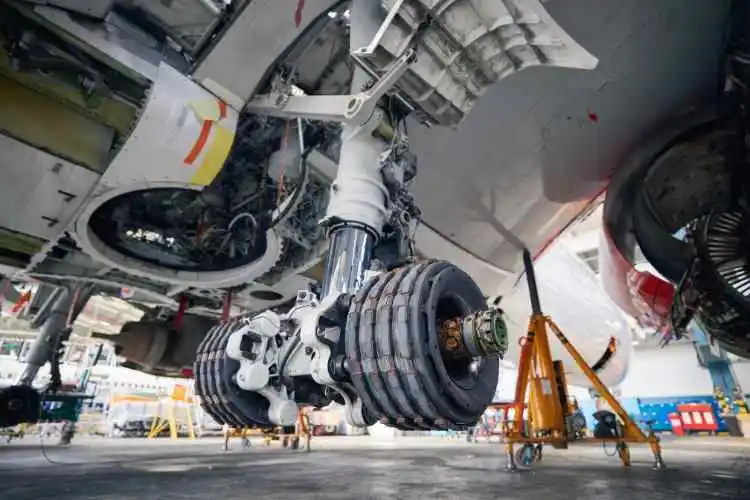Every part is vital to maintaining the efficiency and safety of flights in the complex world of aviation. Amidst these, airplane tires are sometimes disregarded despite being an essential component for the seamless operation of an aircraft. For both aviation experts and hobbyists, it is essential to comprehend the types, maintenance, and safety elements of these durable but frequently overlooked components.
1. Types of Tires
Tires are not one-size-fits-all; they come in a variety of styles suited for specialized applications. The bias-ply tire is a popular variety that is renowned for its robust design featuring several string layers arranged at various angles. Because of its strength and endurance, this design can be applied to a wide range of aircraft sizes and types. Buy high-quality aircraft tires from reliable and well-known sources. Conversely, radial tires whose cords radiate at a 90-degree angle from the centerline are more common in contemporary airplanes because they provide more flexibility and fuel efficiency.
Aviation professionals must be aware of the distinctions between various tire kinds in order to choose the right tires for their particular aircraft and operating needs. The decision between radial and bias-ply tires affects not only performance but also costs of operation and safety.
2. Factors Influencing Tire Selection
The kind of aircraft is the primary factor that influences the selection of tires for an aircraft. Depending on their size, weight, and usage patterns, smaller general aviation aircraft, military jets, and commercial airliners have different tire needs. Additionally, the kind of runway surface matters. While some tires are designed for smooth, well-maintained runways, others are meant for rough, unpaved airstrips.
The climate and weather further influence the choice of tires. Tires appropriate for warm regions are not the same as those for airplanes flying in freezing weather. Because of the wide variety of available tires, one can customize the product to ensure maximum performance and safety in a variety of situations.
3. Tire Maintenance
The continuous dependability and safety of aviation depend heavily on the proper upkeep of tires. The identification of wear, damage, or abnormalities necessitates routine inspections carried out by skilled maintenance workers. Evaluate tread depth, tire pressure, and overall structural integrity to avoid possible failures during landing, takeoff, or flight.
Tire pressure is an essential component of aircraft maintenance with a direct impact on the aircraft’s performance and fuel efficiency. Uneven wear and reduced safety can result from tires that are either overinflated or underinflated. In order to maintain ideal tire inflation levels, extend tire life, and improve aviation safety overall, routine pressure checks and changes are crucial.
4. Safety Considerations in Tires
Adhering to maintenance regulations is not enough to ensure an aircraft’s safety. Awareness regarding the safety risks associated with tires is vital for pilots, ground crews, and maintenance staff. Due to the potential for sharp items to puncture tires during takeoff or landing, foreign object debris (FOD) on runways presents a serious risk.
Furthermore, tire blowouts can have dangerous outcomes even though they happen seldom. Although preemptive steps like rigorous pre-flight checks and regular tire maintenance are crucial, pilots are equipped to manage such scenarios. It is crucial to replace worn-out tires on time to avoid unforeseen breakdowns and lower the chance of accidents.
5. Environmental Impact and Sustainability
There is a growing emphasis on the environmental impact and sustainability of tires, which are made for durability and safety. The aviation sector is investigating environmentally friendly materials and manufacturing techniques to lessen the carbon footprint that comes with tire disposal and production. Eco-friendly tire production methods complement larger industry initiatives to reduce environmental impact and advance a more environmentally conscious aviation sector.
6. Emerging Technologies in Tires
The landscape of tires is always being reshaped at the hands of technological advancements. Tires that are equipped with sensors that monitor the temperature and pressure of the tires in real-time are one example of an innovation that contributes to improved safety and performance. By enabling proactive maintenance, these technologies make it possible to identify problems in a timely manner, hence lowering the likelihood of breakdowns occurring while the aircraft is in flight.
Conclusion
Tires are an essential part of aviation and are vital to both flight efficiency and safety. The various tire types, selection criteria; maintenance processes, safety issues, and the fast-evolving technology sector underline the complexity and necessity of this seemingly simple but crucial aviation component. Maintaining the safety and success of air travel requires a thorough grasp of tires, even as the aviation business changes.
